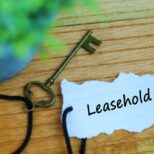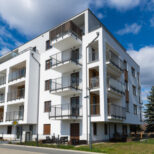
Obligations under a full repairing and insuring commercial lease
5th August 2021 by Mark Preece
Keeping commercial property insured and in good repair is important for both landlords and tenants, but for slightly different reasons. The tenant wants to be able to run a business from a well-maintained property. The landlord’s chief interest is in preserving the value of the property as an investment, at little or no net cost. The landlord achieves this by granting a full repairing and insuring lease, which passes liability for the costs of repair and insurance to the tenant.
There is still scope for disagreement about who is responsible for repairing specific parts of the property and to what standard. Both parties need good legal advice before they enter into the lease and during the term, so they know what they are expected to maintain and how much it is likely to cost them.
‘A full repairing and insuring lease is the gold standard for a commercial landlord, but it does not mean they can forget about the state of the property and leave it all to the tenant,’ explains Mark Preece, head of the commercial property team with Laceys Solicitors. ‘The landlord remains responsible for parts not let to the tenant and for arranging the insurance, so it is really important to understand what the lease says about those issues.’
What must the tenant maintain?
In a full repairing and insuring lease, the tenant must maintain the parts of the property covered by the lease. Where the whole of a commercial building is let to one tenant, the tenant must maintain all of it.
It is more complex in a multi-let building, where leases will often include only internal parts, with the structure and common areas retained by the landlord. In that situation, the tenants will be responsible for the parts let to them and the landlord will be obliged to repair the rest (for example external landscaping, parking areas and building security systems). The landlord will recover as much of the cost as possible through the service charge.
The description of the premises in the lease is crucial, including what it says about how walls, floors, ceilings, and the spaces between them are divided between occupiers.
Windows, plate glass and shopfronts are a bit different and are often stated to be the tenant’s responsibility, even where they sit physically within a part of the structure retained by the landlord. This is not a fixed rule and where modern buildings have glass as an integral part of the exterior design, it will often be up to the landlord to repair it.
Insurance
In principle, the landlord will insure the whole building and will recover the premium from the tenants. If there is damage by an insured risk, tenants do not have to repair it. Instead, the landlord will claim on the policy and use the insurance money to fix the damage.
In practice there can be gaps in the cover, for example if it is not possible to get insurance against a particular risk. This is unusual but, in the past, insurers have warned that they may withdraw cover for damage by terrorism and, in some areas, flood.
Leases often set out specific rules for sharing the cost of uninsured loss, but if a lease is silent then the tenant is still responsible for repairing damage to parts of the property included in the lease.
Standard of repair
A full repairing and insuring lease will typically require the tenant to keep the property ‘in good and substantial repair’ or ‘in good and substantial repair and condition’. If the property is not in good repair at the start of the lease, the tenant may have to bring it up to that state and then maintain it.
What counts as ‘good and substantial repair’ will depend on the nature, location and age of the property, and the tenant of a unit in a well-worn parade of shops would not be expected to bring it up to the standard of a unit in a brand-new shopping centre. This flexible view of the standard of repair is helpful in one sense, but it does leave scope for argument.
Disputes often arise over whether specific work is a ‘repair’. The tenant’s repairing obligation bites when some part of the property is in disrepair, which means that it has deteriorated from its previous condition. Some properties are accidentally built with defects and the tenant will want to make it clear that fixing a defect is not part of the repairing obligation. Including a reference to ‘condition’ in the tenant’s obligation is thought to strengthen it beyond just repair, for example to cover damage by condensation.
An alternative approach
Where a property is in a poor state of repair at the outset and especially if the tenant is taking a short lease, the tenant’s solicitor may be able to negotiate a less onerous repairing obligation.
A common alternative is to agree a detailed schedule of condition, showing the state of repair at the start of the lease, and to limit the tenant’s obligation to keeping it in no worse a state than shown in the schedule.
Occasionally, the landlord will accept that the tenant need only leave the premises clean and tidy (sometimes referred to as broom-swept), as long as the tenant has not actually caused any damage.
How we can help
Failure to repair causes problems for both landlord and tenant, especially at the end of the lease. The landlord wants the property back in a lettable state and the tenant wants to leave without any unexpected expense. An argument over repair could even prevent a tenant exercising a valuable break right. Getting good legal advice at the outset will mean both parties know what to expect and will avoid a costly dispute.
If you would like further advice please contact Mark Preece in confidence on 01202 377800 or email m.preece@laceyssolicitors.co.uk
This article is for general information only and does not constitute legal or professional advice. Please note that the law may have changed since this article was published.



